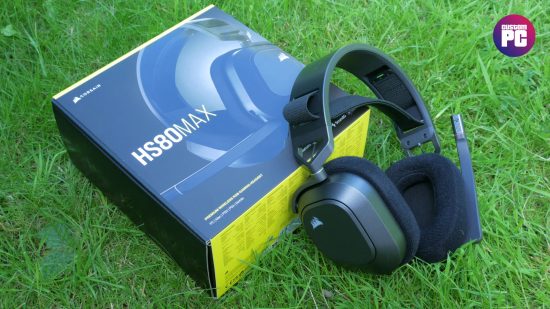Our Verdict
72%The HS80 Max is reasonably comfortable with decent and easy to customize sound quality, and the addition of Bluetooth makes it a fairly versatile headset.
The Corsair HS80 Max Wireless is the company’s new flagship wireless gaming headset that includes Bluetooth, Dolby Atmos spatial audio, and Sonarworks SoundID technology for creating a custom EQ that suits your listening preference. Is this latest Corsair gaming headset the one to get? Read on to find out.
Corsair HS80 Max wireless design
At a glance, the HS80 Max doesn’t look much different from the original Corsair HS80 RGB wireless from back in 2021. It has a very similar design with the same non-removable, flip-down microphone, angular earcups, RGB-lit Corsair logos on the earcups, and a chunky plastic headband, all finished in a metallic grey color (the headset also comes in white).
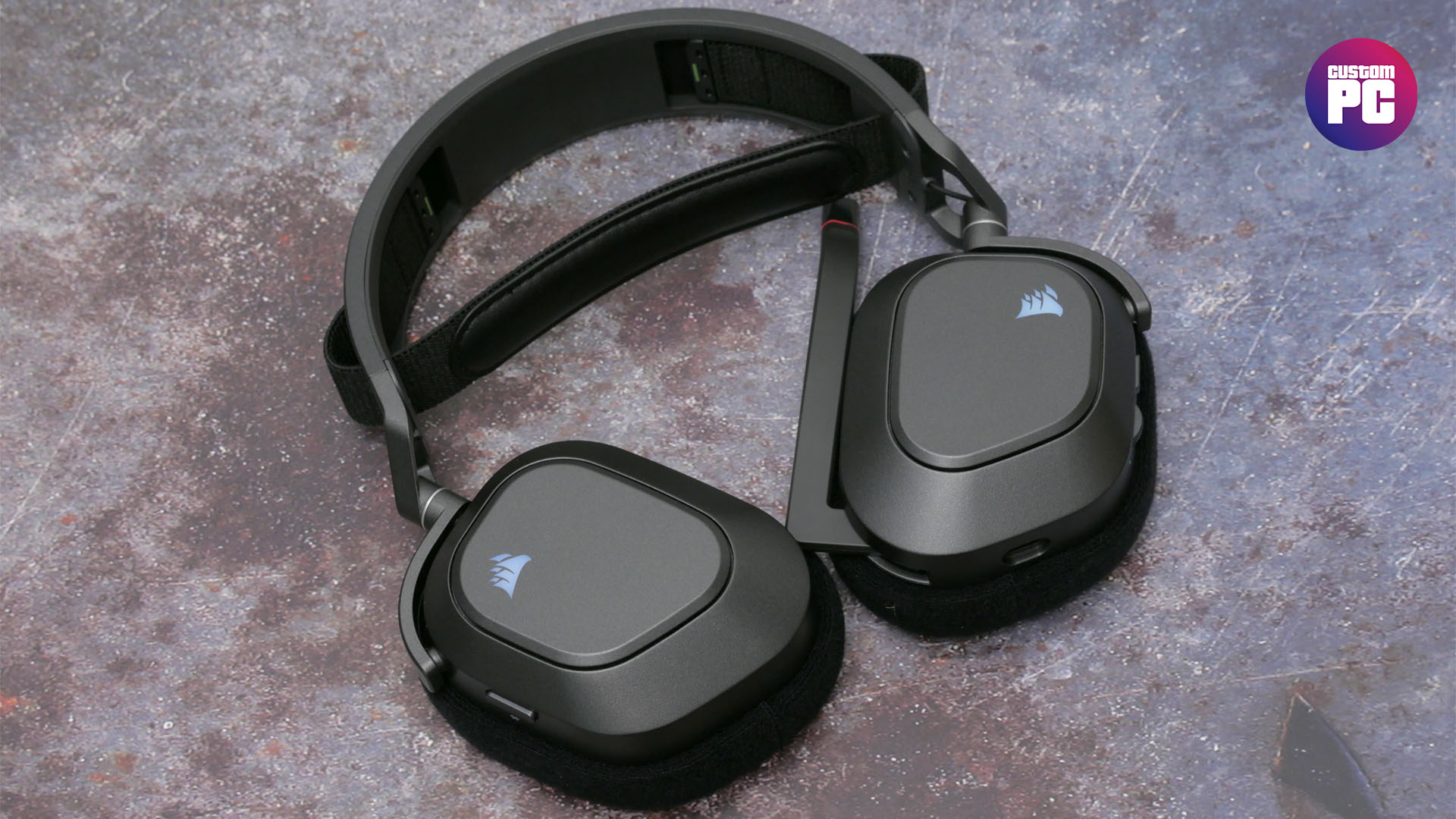
It’s a smart-looking design but the chunkiness of the whole unit, and the non-removable microphone, mean it doesn’t feel like a headset that’s all that suited to travel, despite the addition of Bluetooth. Other similar headsets, such as the Razer BlackShark V2 Pro (2023) and EPOS H3Pro Hybrid, have removable microphones and slightly sleeker designs that make them better suited as all-purpose headsets.
Corsair HS80 Max Wireless comfort and fit
The HS80 Max has a fixed upper headband with an elasticated band slung underneath to provide cushioning and adjustment. The band tucks in under the fixed headband and uses a hook and loop section to hold the band to the underside. It’s a clean-looking system but it’s impossible to adjust while on your head and fairly awkward to adjust even when it’s off your head.
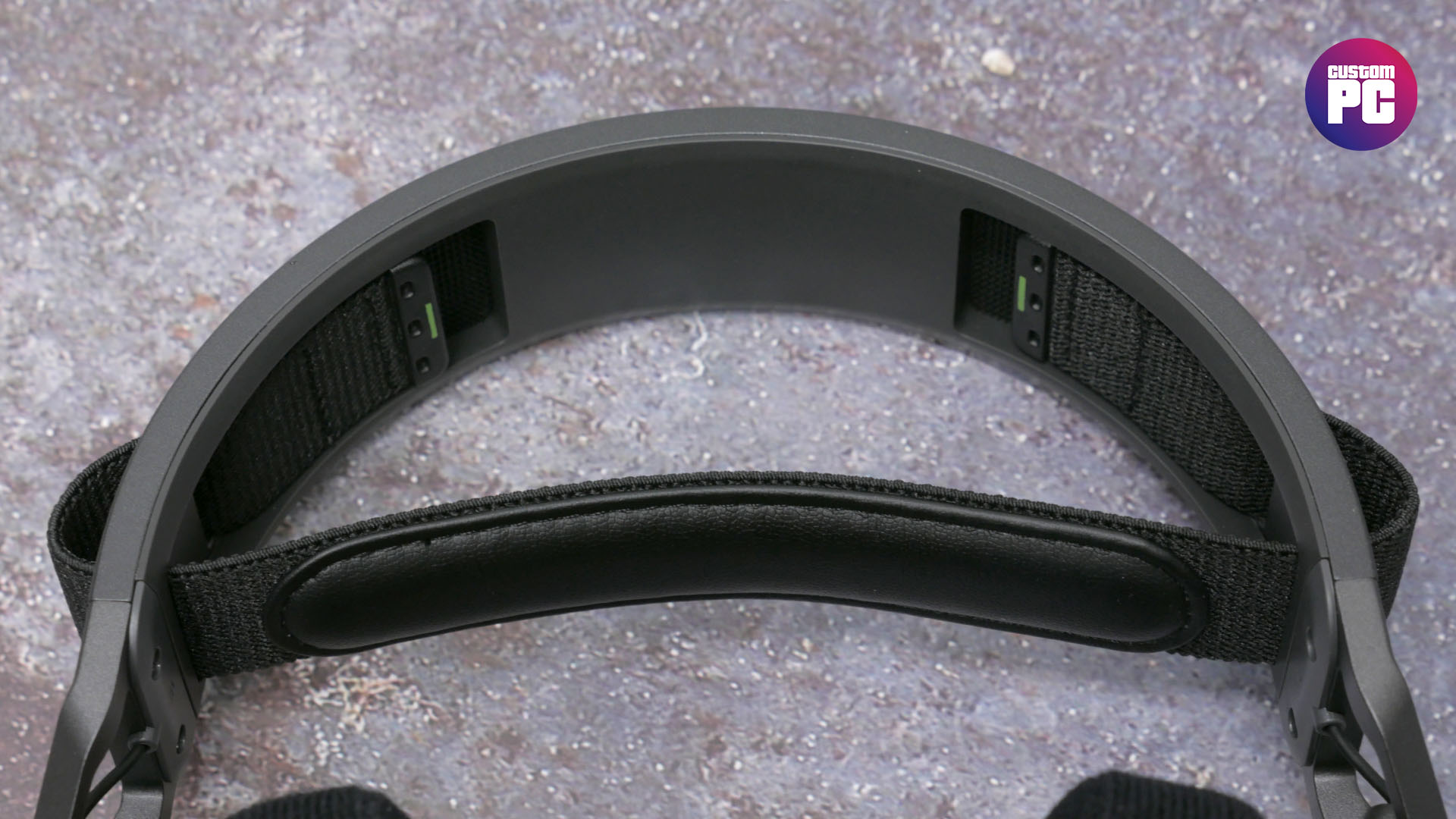
Once the band is adjusted to the right length, though, it provides a well cushioned support for the rest of the headset, which is good as this is a fairly heavy headset at 352g. Comparatively, the BlackShark V2 Pro (2023) weighs 320g while the H3Pro Hybrid is just 308g (its removable boom mic drops the weight to 288g for travel).
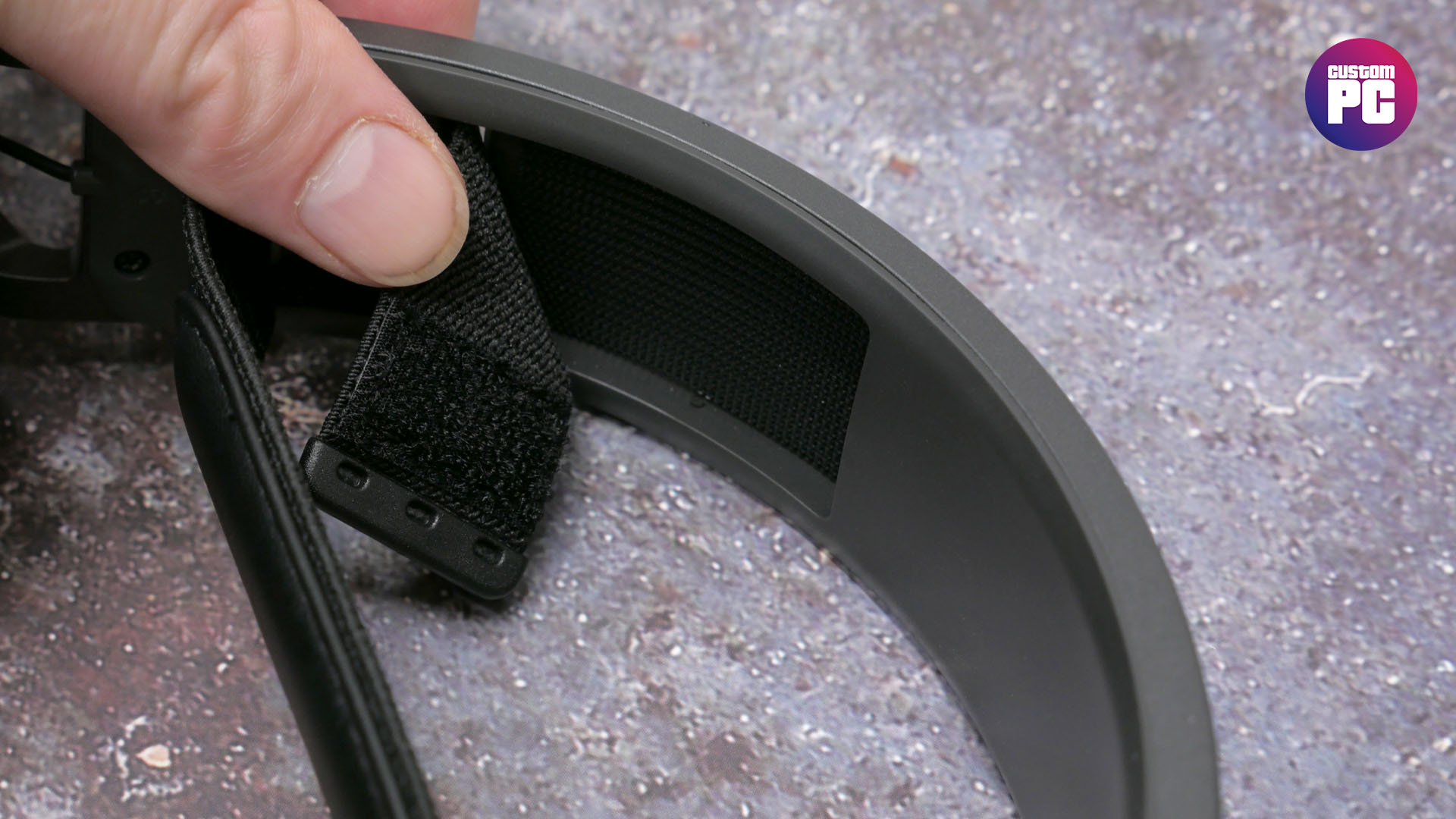
Also providing decent comfort levels are the earcups and their padding. The padding is deep enough to mostly stop your ears from touching the inside of the earcups, yet soft enough not to cause too much discomfort for glasses wearers. The fit is also reasonably secure, though the headset does start to slide off your head when you’re leaning back – it doesn’t otherwise move if you tip your head forward or shake it left to right.
The seal under the earcup padding is decent thanks to a strong clamping force from the headset too. In fact, the force can be a little too much at times. It’s not so much uncomfortable as just slightly claustrophobic.
Corsair HS80 Max Wireless features
Much like the design of the HS80 Max is very similar to the older HS80, at first glance the feature set is similar too, other than the addition of Bluetooth. However, there are a few changes under the hood.
For a start, the older HS80 included the ability to connect the headset directly to your PC via USB to both charge it and provide an audio connection. This also made a high bit rate 24-bit, 96KHz audio option available that wasn’t accessible over its standard 2.4GHz wireless connection.
This direct USB connection ability is now gone and the USB connection is for charging only. On the plus side, Corsair has added the high bit rate connection as an option over wireless anyway. The headset defaults to an 8-channel 24-bit, 48kHz mode for use with its virtual surround modes, but if you head into the Windows audio options you can switch the headset to a 2-channel 24-bit, 96kHz mode.
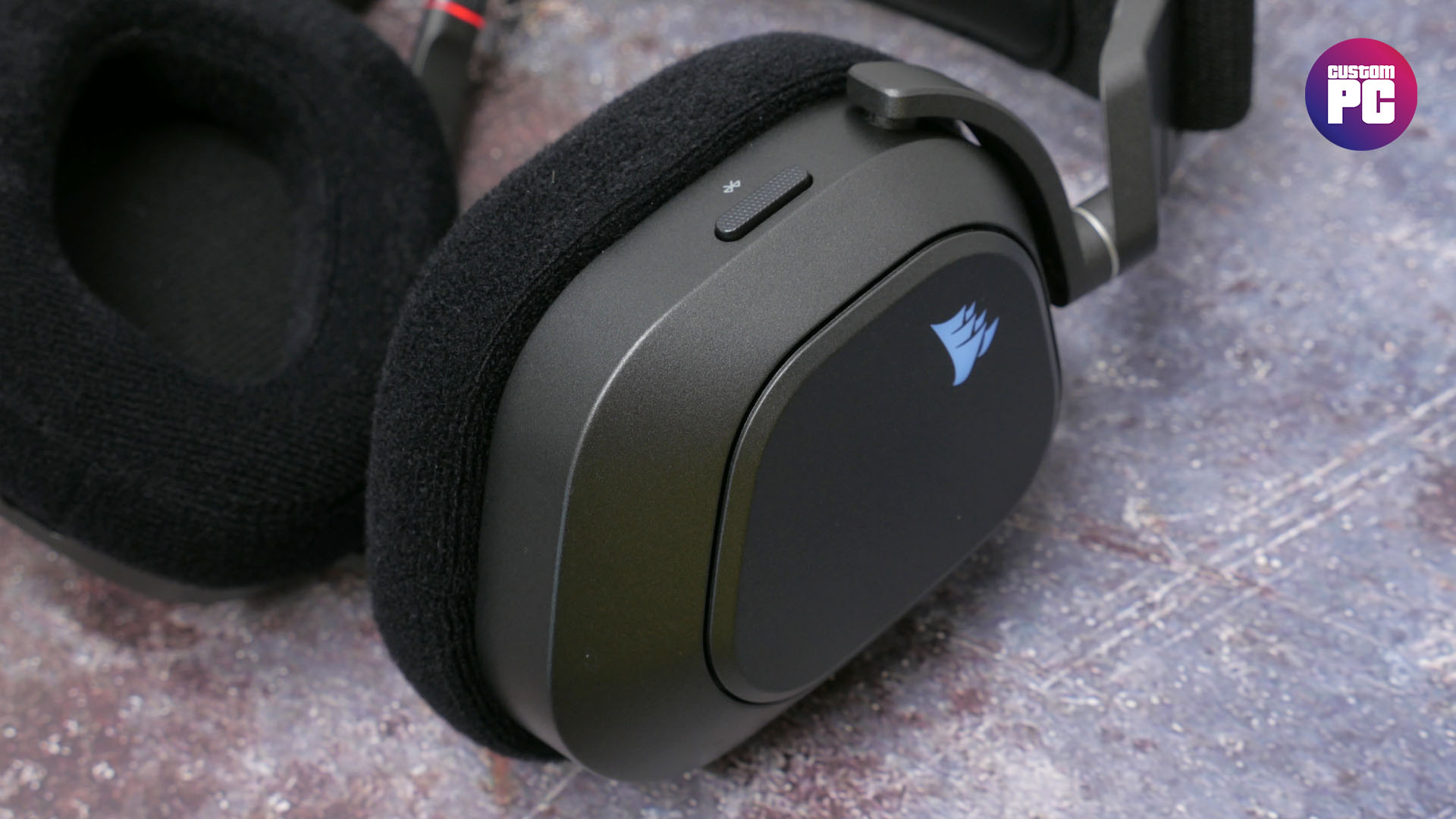
The addition of Bluetooth is no small change either. This lets you connect to a phone or similar and use both the headphones and mic to make calls, as well as listen to music. A button on the right earcup also provides play/pause/skip/back/answer/hangup features, making the Bluetooth experience that much smoother.
You can also keep connected to your PC while hooked up to a phone, so you can easily switch from listening/watching/playing on your PC to taking a call on your phone. However, what you can’t do is use Bluetooth while still listening over wireless, unlike you can on the Turtle Beach Stealth Pro, for instance (review incoming). When not connected via Bluetooth, the right earcup button still provides play/pause/skip/back features.
The other controls on this headset sit on the left earcup and they consist of a power button and a volume wheel. With a tap, the power button can cycle between Bluetooth or wireless modes (for listening – Bluetooth will remain connected for taking calls), and when held down it will power on and off the device.
The volume wheel is a digital one, rather than analog, which adjusts the Windows volume control, the volume of your phone, or another connected Bluetooth device. This is generally quite a convenient arrangement, though it does mean you can’t just find a volume setting you like and leave the volume wheel in that position – there’s also the risk of connecting a new device and the volume jumping straight to its maximum. The volume wheel can also be used to cycle through four different EQ presets when tapped.
The HS80 Max doesn’t have an analog input for those occasions when your audio source doesn’t have Bluetooth or USB. That’s fairly typical for a USB/wireless gaming headset these days, but the EPOS H3Pro Hybrid does include this feature. That headset also includes active noise cancelling which again isn’t featured on this headset.
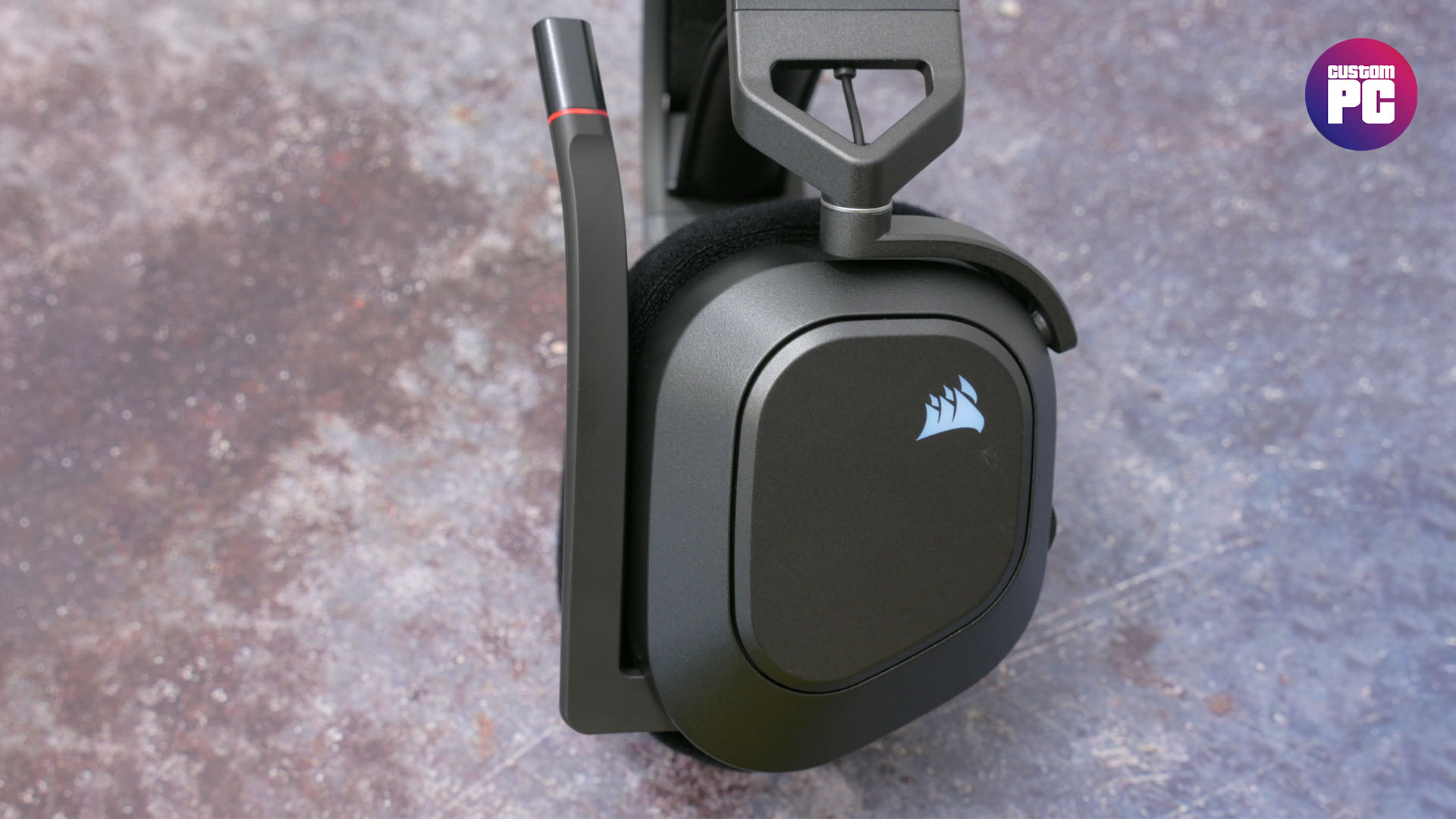
Corsair HS80 Max Wireless microphone
The HS80 Max’s microphone isn’t removable but can be rotated up and out of the way, and it will auto-mute when stowed. A ring of light on the mic’s end indicates when the mic is live (white) or muted (red) and a voice prompt will also tell you what’s going on – thankfully this can be turned off in Corsair’s iCUE software.
This overall mic arrangement is fairly convenient but again isn’t ideal for travel. Also, once deployed the boom arm isn’t very adjustable (it bends slightly in and out) and doesn’t rotate down all that far, making it tricky to position as close as to the mouth we’d like. There’s also no windshield, although the mic arm is so short it doesn’t ever really sit in front of the nose or mouth enough to get the full gale force of your outbursts.
Microphone sound quality is decent if unexceptional. There’s enough clarity for voice comms but none of the extra frequency and dynamic range of the BlackShark V2 Pro (2023) and H3Pro Hybrid.
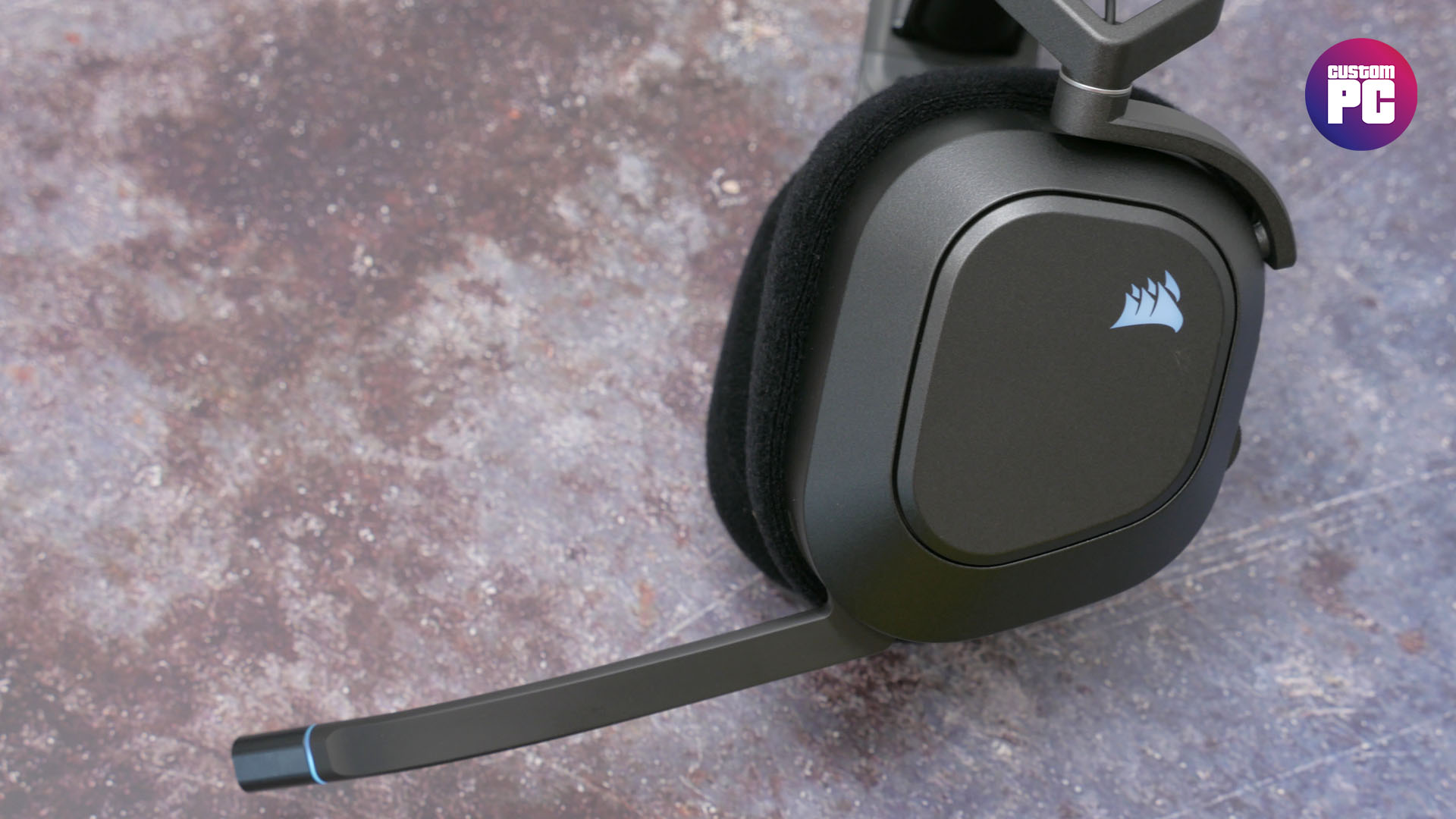
You can set the microphone to pass what it’s picking up back to the headphones – known as sidetone – using the iCUE software. You can enable or disable the feature and set the volume. We found this particularly useful as the closed-back design of the headphones blocks quite a lot of external noise, making it difficult to gauge the volume of your voice.
Corsair HS80 Max Wireless headphone sound quality
The HS80 Max employs a single 50mm driver in each earcup, with the headset rated for a 20-20kHz frequency range. This compares to 20-40kHz for the Corsair Virtuoso RGB Wireless SE and 20-28kHz for the BlackShark V2 Pro (2023). However, proving that frequency range isn’t everything, the H3Pro Hybrid is also rated to just 20-20kHz and still sounds good.
In use, the HS80 Max sounds decent, with good clarity, a strong bass presence, and no notable background hiss. Even on the ‘Pure Direct’ EQ setting, though, there’s quite a scooped sound with a strong bass presence and boosted top end. This is a typical gamer-centric sound profile, which makes for a punchy sound that brings games and certain genres of music to life, but it’s not ideal for those that prefer a flatter, more close-to-the-recording sound. The H3Pro Hybrid, for instance, is much closer to a pure flat sound profile.
Switch to the bass boost EQ on this headset and you get a very muddy booming sound that sounds terrible for just about anything. It’s a similar story with the other default EQ settings – you’re much better off experimenting and creating a subtler custom profile of your own.
More useful is a new addition to this headset which is a Soundworks SoundID setting. This is available through Corsair’s iCUE software and it provides a customized EQ that’s supposed to make the headset sound as good as it can for your listening preference. It works by playing back various test tones to each ear individually to assess your hearing sensitivity, then getting you to pick your favorite EQ from a variety of A/B comparisons – it’s a bit like being at the opticians when they ask if it’s clearer through lens A or B.
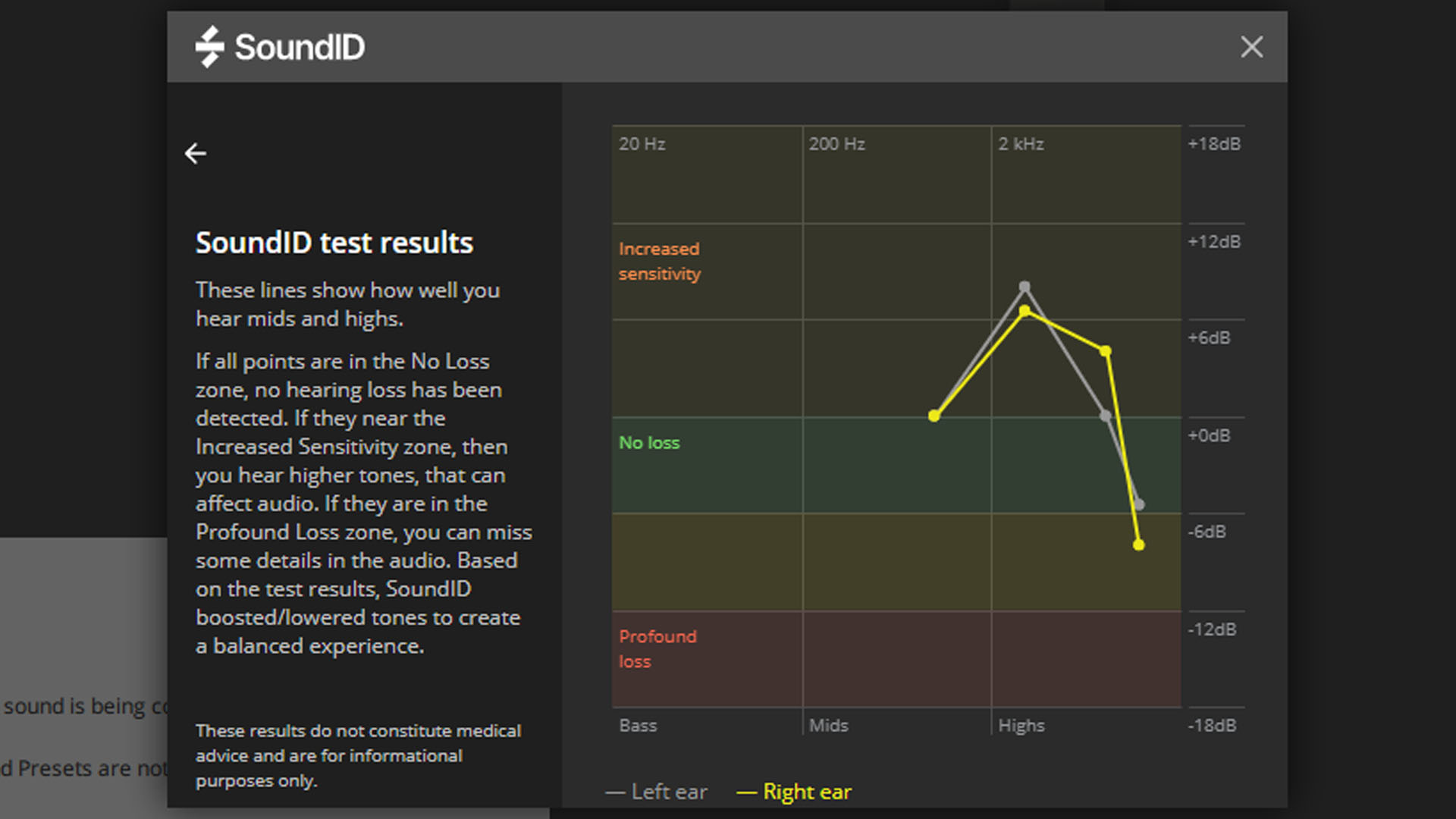
Our first SoundID run
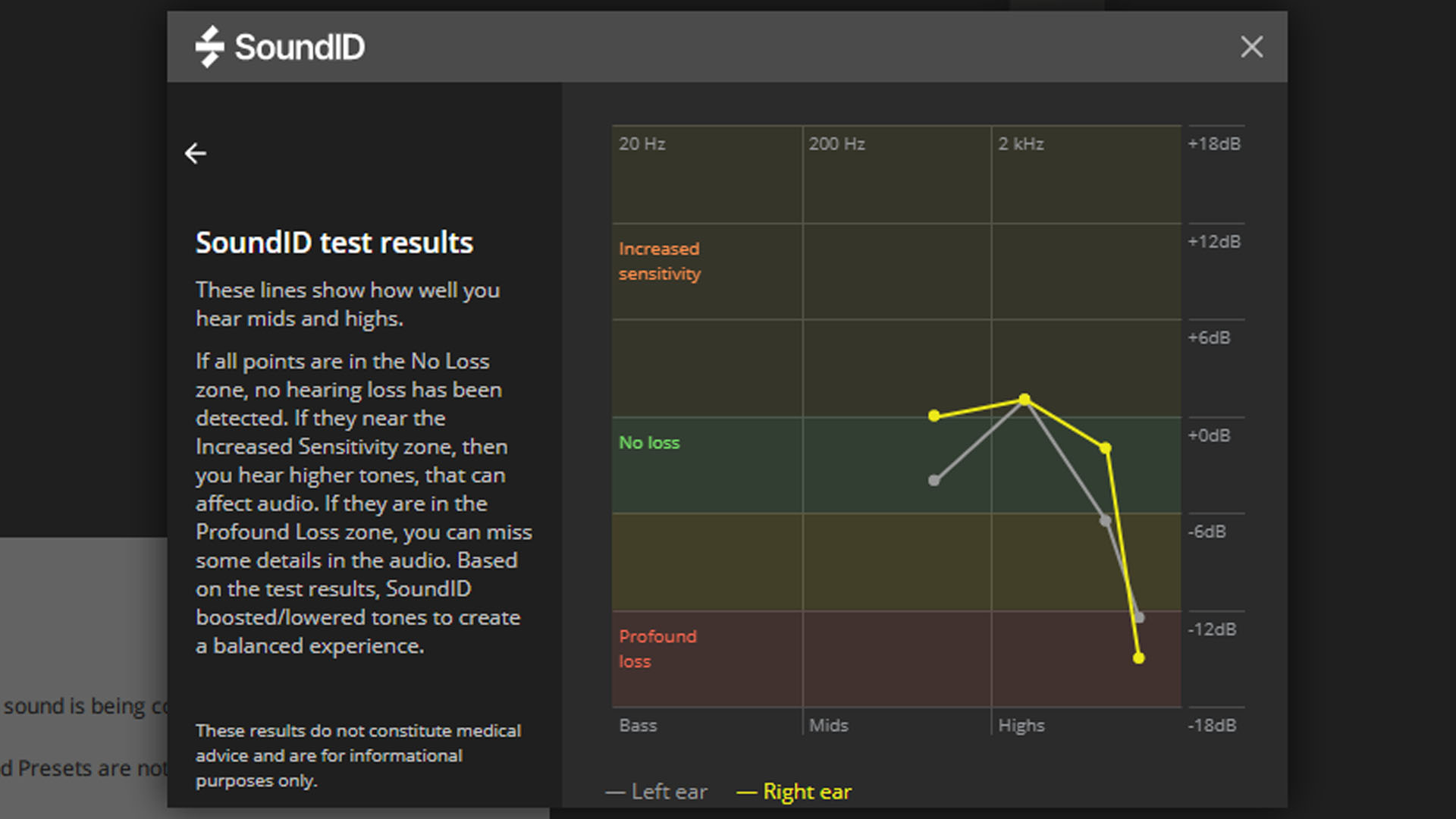
Our second SoundID run
Once analyzed, you’re shown a chart of your hearing sensitivity and then have your own customized EQ that you can toggle on and off. It’s a neat trick and it was certainly interesting to see the results of the hearing test, though I didn’t find the end result definitely better than the default sound. I also ran the test twice and, although the overall sensitivity curves were similar in shape, the amplitudes were quite different – it just goes to show that audio is a mightily fickle and tricky area to test.
This headset is also compatible/provides a license for Dolby’s Atmos Access app, which lets you run Dolby Atmos virtual surround sound through the headset. Annoyingly, though, the app is only available through the Microsoft Store, not as a standalone app or integrated into iCUE, so any users that run a local Windows account won’t be able to access this feature.
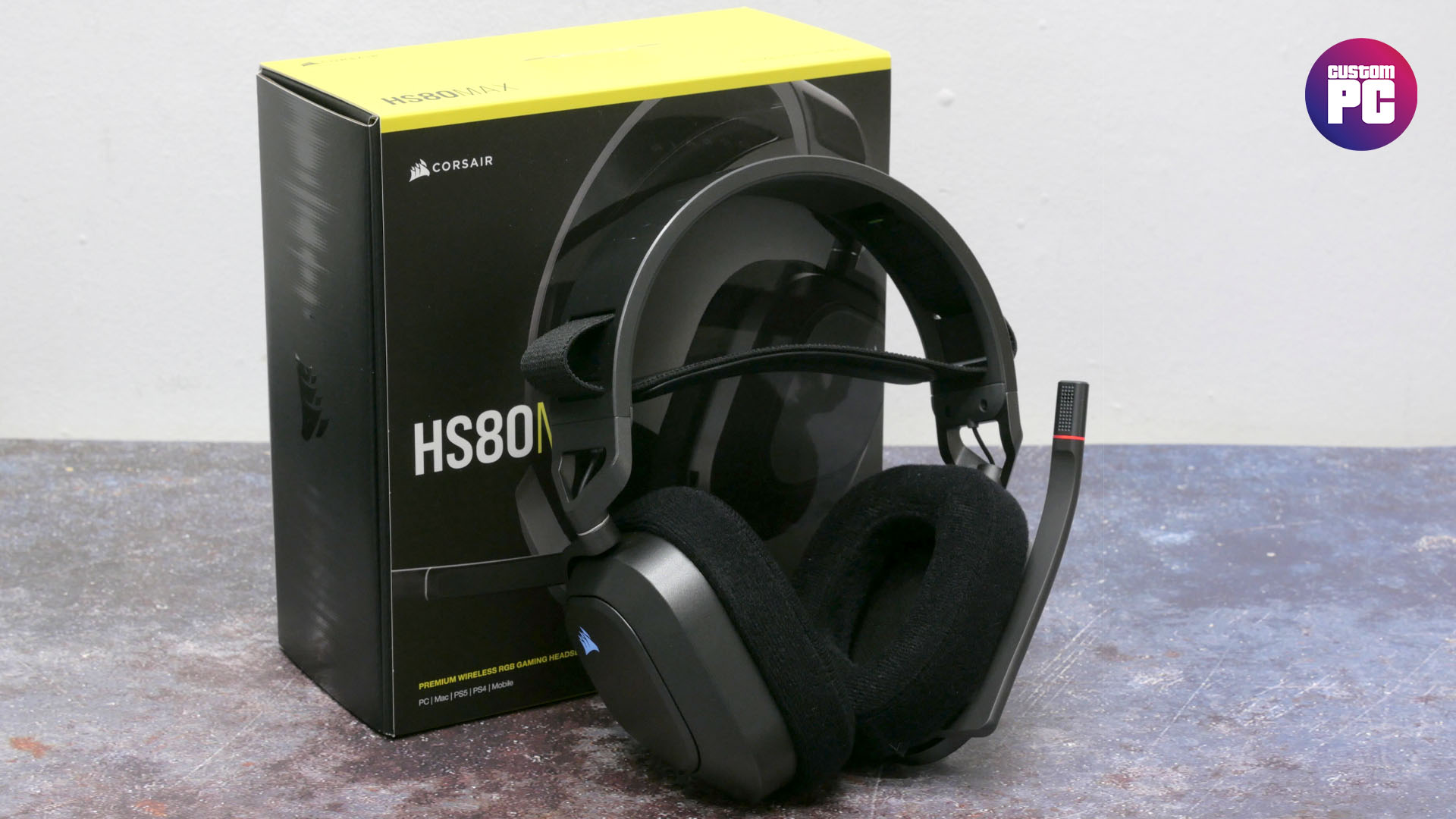
Corsair HS80 Max Wireless battery life
Corsair rates the HS80 Max for 65 hours of battery life over 2.4GHz wireless and 130 hours using Bluetooth. These figures are with RGB disabled, though. With RGB turned on the 2.4GHz wireless battery life drops to 24 hours.
In use, with the default configuration of having the RGB lighting on, sure enough, we found the headset ran out of juice after two or three days of using the headset for 8-10 hours each day. This is definitely short enough to feel a little annoying and inconvenient, so we’d be inclined to disable the RGB and get more than double the battery life.
Corsair HS80 Max Wireless pros and cons
Pros
- Useful SoundID feature
- Bluetooth is a great addition
- Decent battery life without RGB
- Reasonably comfortable
- Fun gamer-centric sound
Cons
- A touch heavy
- Microphone isn’t removable
- Battery life low with RGB
- No wired audio connection
- Hard to get a flatter, more natural sound
Corsair HS80 Max Wireless specs
The Corsair HS80 Max Wireless specs list is:
| Connections | 2.4GHz wireless, Bluetooth, USB-C charging |
| Frequency range | 20-20,000Hz |
| Sensitivity / sound pressure level | 129 dB (+/-3dB) |
| Mic frequency response | 100Hz – 10kHz |
| Mic sensitivity | -38dB (+/-3dB) |
| Weight | 352g |
| Battery life | 65 hours on 2.4GHz wireless, 130 hours on Bluetooth |
| Extras | Fold-down mic, multi-function Bluetooth media-control button, multi-function power button, volume wheel. SoundID profiling, Dolby Atmos |
Corsair HS80 Max Wireless price
The Corsair HS80 Max Wireless price is $180, making it quite an expensive headset, though some rival Bluetooth-equipped headsets are even pricier.
Price: Expect to pay $180 (£170)
Corsair HS80 Max Wireless review conclusion
The Corsair HS80 Max Wireless is a quality premium gaming headset, with the addition of Bluetooth making it much more versatile for most users than the existing HS80 model. That said, some may mourn the loss of the old headset’s USB audio connection.
Comfort is decent, even if the headset can feel a little tight, while sound quality is solid if you don’t mind the slightly scooped, bass-and-treble-boosted EQ. The SoundID profiling is a neat addition too, and the virtual surround Dolby Atmos feature works well.
This headset doesn’t leap straight to the top of our best gaming headset list but it’s a decent contender that’s a little cheaper than some key rivals with similar feature sets.
Are you tempted by the new HS80 Max? Let us know your thoughts on the Custom PC Facebook page, via Twitter, or join our Custom PC and Gaming Setup Facebook group and tap into the knowledge of our 400,000+ members.
